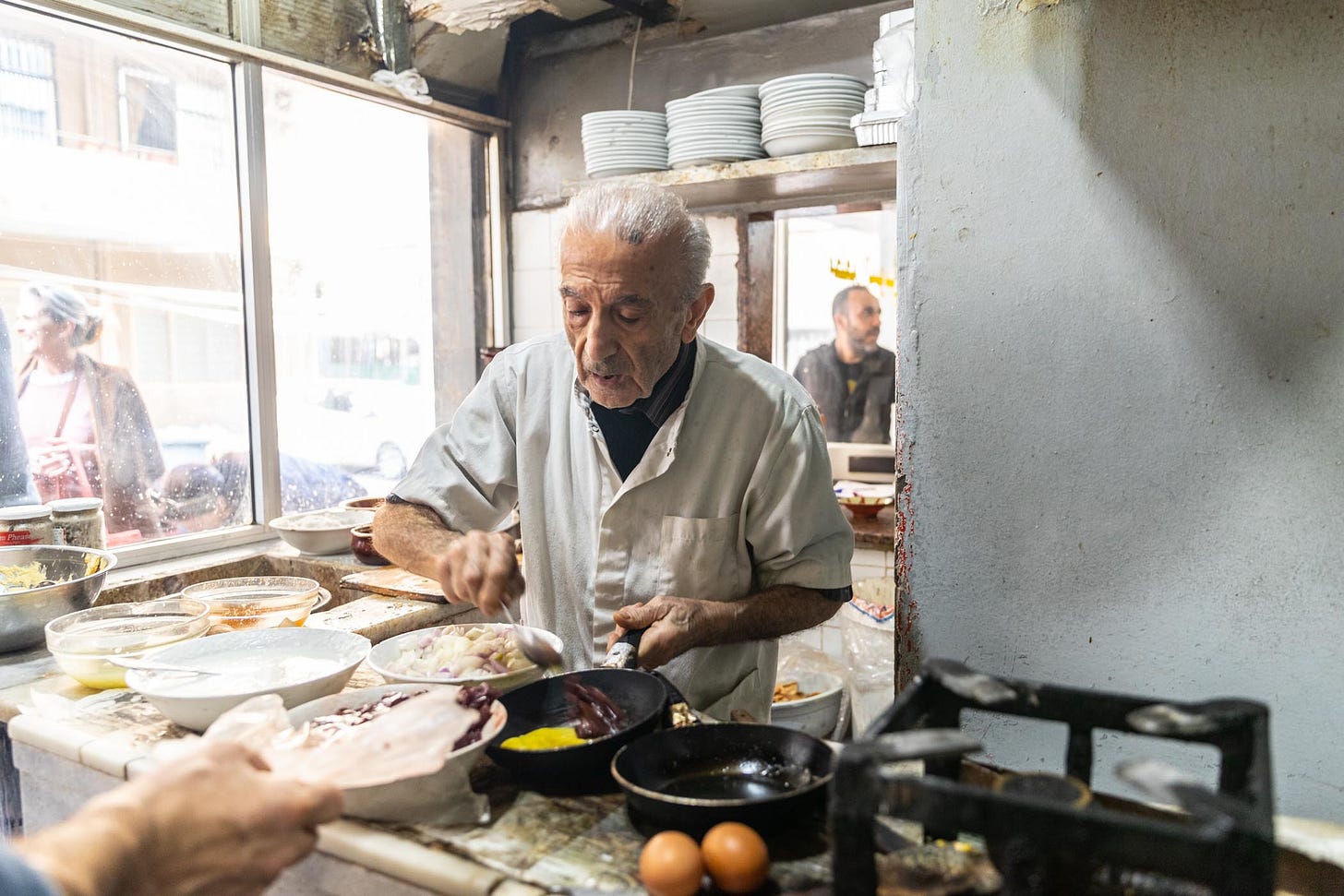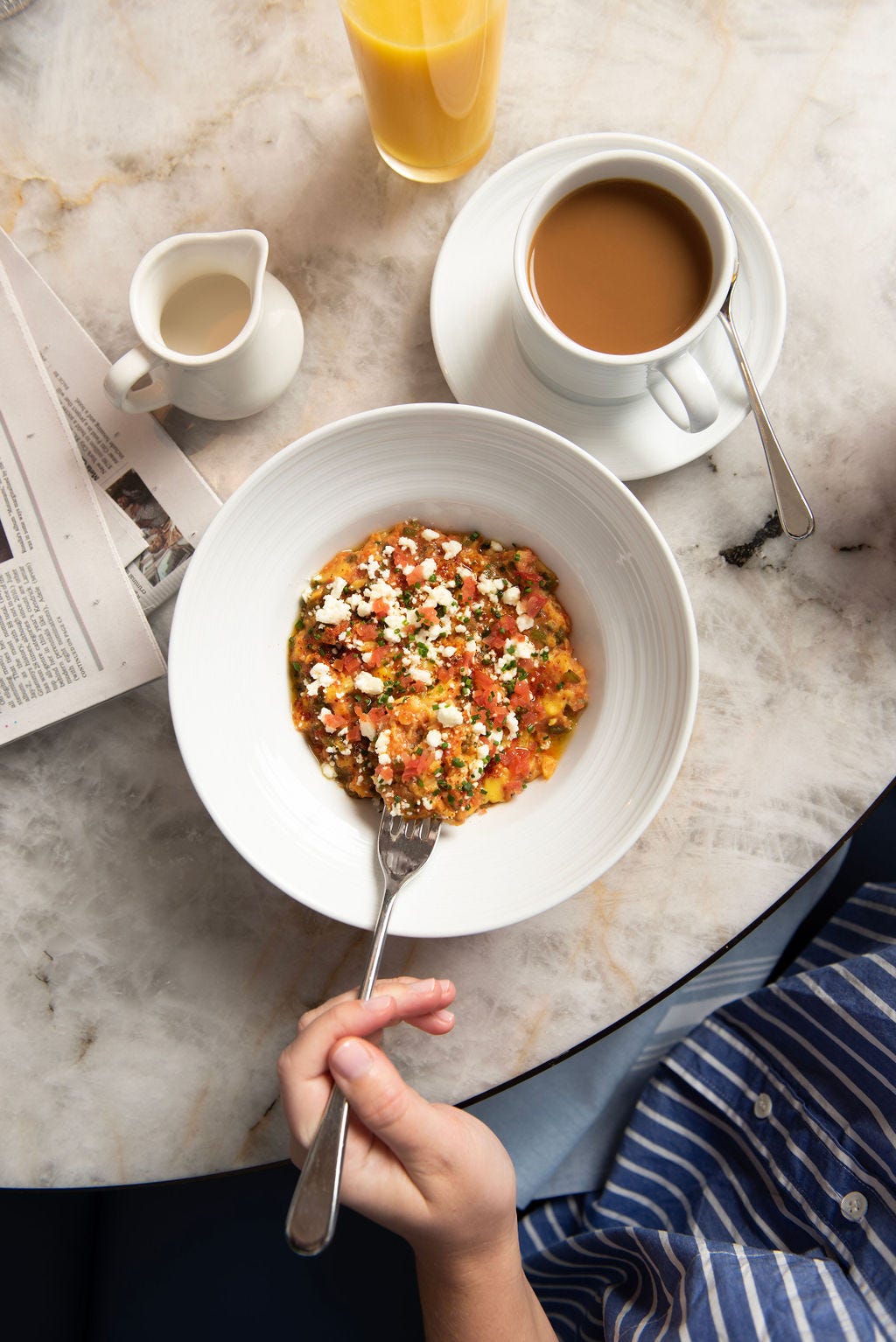Breakfast in Beirut and beyond...!
A morning meal is a window into other communities and cultures
Amigos,
A few months ago, I was doing a lot of traveling around the Eastern Mediterranean, to Lebanon, Turkey (both before and after the devastating earthquakes), and Greece. Like you, a lot of the reason I travel is to learn about cultures and the best way to do that is through the food…shopping at the markets and tasting all the special dishes of the cities and towns I am in. You discover so much about the heart of a place and its people through its food, I think it’s why Anthony Bourdain and I got along so well…because we loved to learn from people and to understand communities through their food.
One of the things I love about traveling is seeing the way people wake up and what they have for breakfast. Do they have milky coffee and a sweet pastry, or something fried like a bacon egg and cheese sandwich with a hot cup of black coffee, or like we do in Spain with a cortado and either a pastry, some pan con tomate, or even chorizo and eggs. For me, I usually like a light breakfast, something fresh and easy that won’t make you fall asleep a few hours after eating it. But when I am traveling, I try to eat the way the locals do….whatever that looks like.
One of my favorite moments from the trip was in Beirut, the first morning we were there, when my team and I went to El Soussi, a restaurant that is famous for its breakfast—it’s been open for more than 130 years (a century older than Jaleo…think about that!). We were welcomed by Raji Kibi, who runs the restaurant named after his grandfather, who cooked us an amazing breakfast, including his most famous dish, eggs awarma…finely ground lamb and lamb fat, which he cooks with two eggs. The texture, the flavor, everything about it was incredible. I have never thought to use lamb fat for my eggs, but maybe this will be a new addition to my kitchen!
After we ate, I pushed my way into the kitchen and started cooking with Raji…we made eggs, chickpeas, and more. I wanted to try everything and see how he gets the flavors he gets. And my friend, the Lebanese-Armenian chef and writer Aline Kamakian, was there to cheer me on.
Breakfast in America is many things, depending on where you grew up, what your morning routine is, if you like a small breakfast or a big heavy one. At Zaytinya, my newest restaurant in New York, we are bringing you breakfast like you might have if you were waking up in places like Beirut, Istanbul, or Athens. These are some of my favorite breakfasts because the dishes bring in so many flavors to the first meal of the day—eggs and chilis and tomatoes and salty cheeses, everything to get your day started right.
One of my favorites at Zaytinya is an egg dish that originated in a small town in the far west of Turkey. Menemen is very traditional, gently scrambled eggs with tomatoes, spring onions, and green peppers, spiced lightly with some star anise and Marash pepper, then topped with feta and olive oil. It’s not like a scrambled egg you’ve had before, it’s full of different tastes and textures and it’s something you want to keep going back to eat more and more of it.
Çilbir (pronounced jil-bur) is another one that’s probably not something you have had before, but I’m sure you would love. It is a dish that has a lot of history…it dates back to the Ottoman sultans, as far back as the 15th century. Traditionally it’s poached eggs with whipped yogurt and spiced butter, but you know how we like to do things a little differently! At Zaytinya instead of the spiced butter, we created a chili crisp—like the amazing Chinese condiment—with Turkish marash chilies.
Thinking about these meals, I am getting hungry for all of these breakfasts now, and excited about the next time I will be traveling, meeting new people and exploring the flavors and foods of far away places. There is so much we can learn from the food we eat when we travel and take ourselves outside of our comfort zone. Those adventures we take bring us closer to different cultures, and to people we might never otherwise meet, which is the most important thing…to shrink the distance between us all with a plate of food.






Schmaltz - rendered chicken fat - was common in our house growing up. When my mother (z"l) rendered it with onions, it became "gribenes" https://en.wikipedia.org/wiki/Gribenes - and we were told to stay away - it was saved for Dad (z"l) who then traveled for work and there for him when he got home to put on a piece of seedy rye. SO reading about lamb fat's use, I was intrigued. Does one render it like one did with chicken fat to make schmaltz? Do tell us please how best to use it and if we take from .. well, what piece of lamb and can one buy lamb fat in the US to use?
One of my most poignant memories of the years we lived in Beirut--pre civil war--was breakfast shared with a group of taxi drivers on the terrace of the Commodore Hotel. Olives, white cheese, fool (beans), yogurt, radishes, spring onions. Let's open a breakfast restaurant, Chef, and serve breakfast all day from all over the world. I'm in!